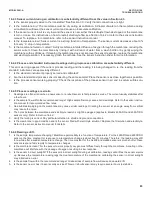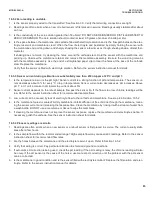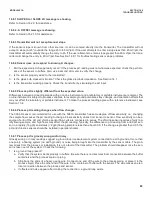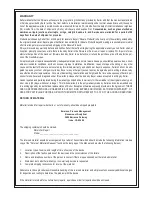
94
MODEL 5081-A
SECTION 16.0
MAINTENANCE
16.13 MEASURING REFERENCE vOLTAGE
Some processes contain substances that poison or shift the
potential of the reference electrode. Sulfide is a good example.
Prolonged exposure to sulfide converts the reference electrode
from a silver/silver chloride electrode to a silver/silver sulfide
electrode. The change in reference voltage is several hundred
millivolts. A good way to check for poisoning is to compare the
voltage of the reference electrode with a silver/silver chloride
electrode known to be good. The reference electrode from a
new sensor is best. See Figure 16-6. If the reference electrode
is good, the voltage difference should be no more than about
20 mV. A poisoned reference electrode usually requires
replacement
FIGURE 16-6. Checking for a Poisoned
Reference Electrode.
Refer to the sensor wiring diagram to identify the
reference leads. A laboratory silver/silver chloride
electrode can be used in place of the second sensor.
Содержание Rosemount Analytical HART 5081-A-HT
Страница 22: ...FIGURE 4 2 FM Intrinsically Safe Installation Label 16 ...
Страница 25: ...FIGURE 4 4 CSA Intrinsically Safe Installation Label 19 ...
Страница 26: ...FIGURE 4 5 CSA Intrinsically Safe Installation 1 of 2 20 ...
Страница 27: ...FIGURE 4 5 CSA Intrinsically Safe Installation 2 of 2 21 ...
Страница 108: ...FIGURE 4 Wiring to Model 5081 102 MODEL 4000 WIRING ...
Страница 110: ...104 ...













































